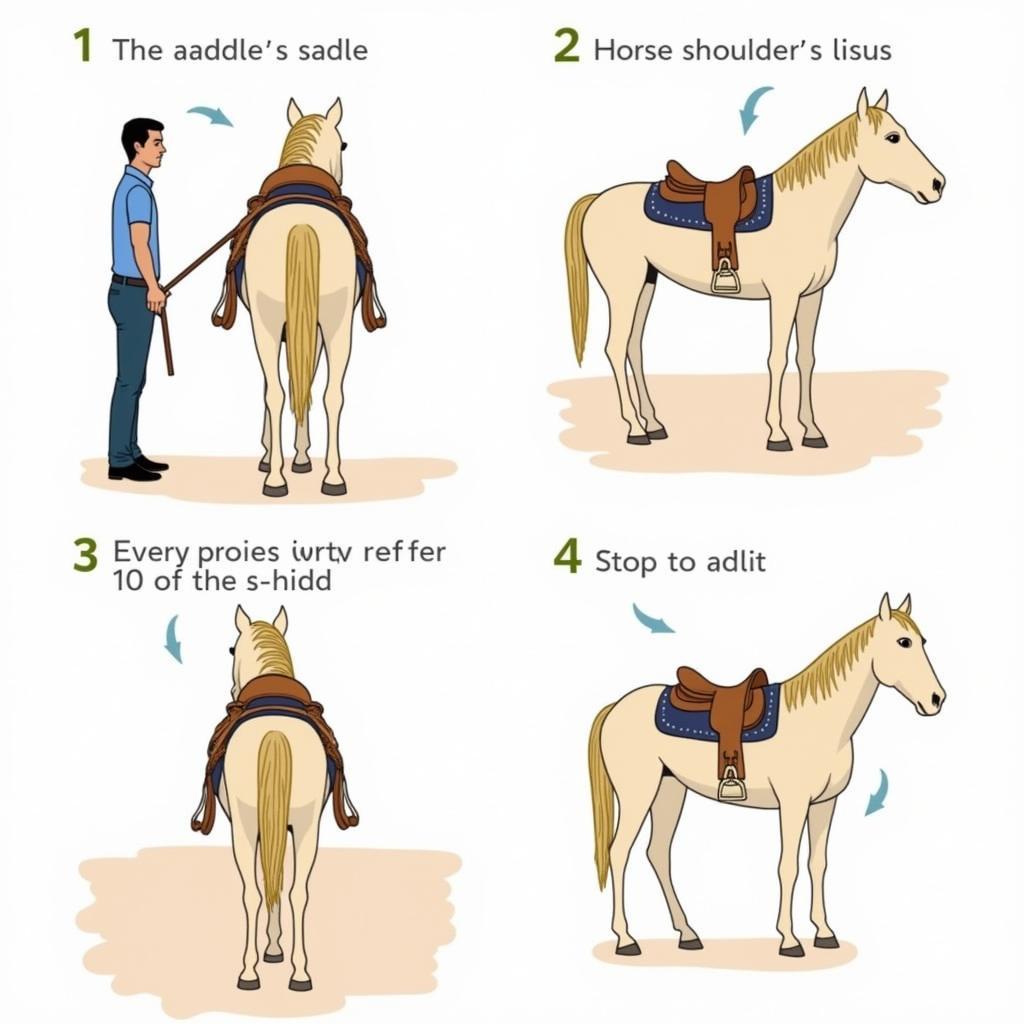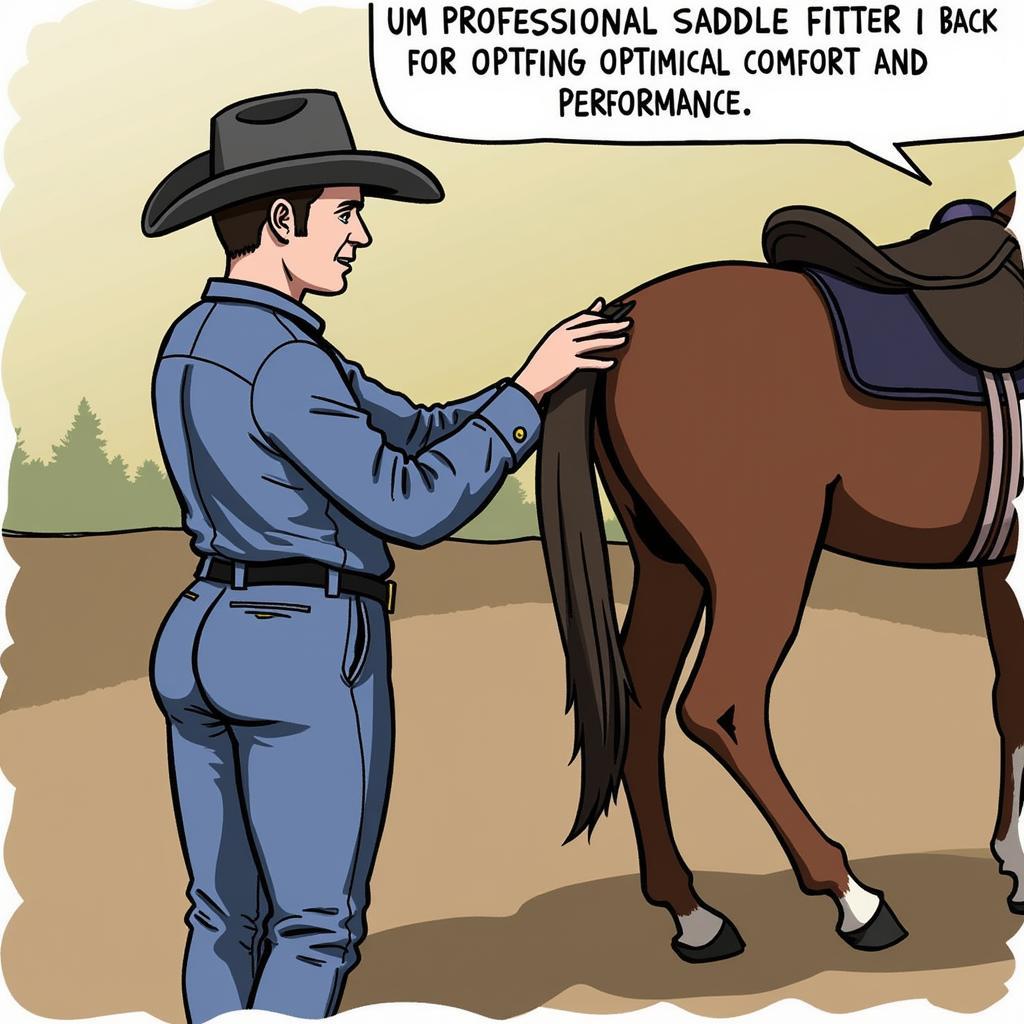A well-fitting saddle is crucial for both horse and rider comfort and performance. The Horse Saddle Position directly impacts your ability to communicate effectively with your horse, while ensuring their well-being. An improper fit can lead to discomfort, pain, and even long-term health issues for your equine companion.
Understanding the Importance of Horse Saddle Position
The saddle acts as an intermediary between you and your horse, transmitting your cues and weight. If the saddle is positioned incorrectly, it can create pressure points, restrict movement, and hinder communication.
A saddle placed too far forward can interfere with the horse’s shoulder blades, leading to soreness, lameness, and even behavioral problems. Conversely, a saddle positioned too far back can put undue strain on the horse’s lumbar region, potentially causing back pain and discomfort.
Factors Affecting Ideal Saddle Position
Determining the correct horse saddle position is not a one-size-fits-all approach. Several factors come into play, including:
- Horse conformation: Different breeds and individuals have varying back lengths, shapes, and muscling, necessitating saddle adjustments.
- Rider size and riding style: Your weight and riding discipline influence the type of saddle and its optimal placement.
- Saddle type: Dressage, jumping, and general-purpose saddles all have unique designs and fitting requirements.
Finding the Sweet Spot: How to Determine Correct Saddle Position
 Checking Saddle Placement
Checking Saddle Placement
- Locate the shoulder blades: With your horse standing on level ground, feel for the bony protrusions at the top of their front legs. These are their shoulder blades.
- Measure a hand’s width: Place your hand flat against your horse’s withers (the highest point of their shoulders). Your saddle’s pommel (the front arch) should sit approximately a hand’s width behind the withers.
- Check for levelness: Ensure the saddle sits level on the horse’s back, neither tipping forward nor backward.
- Assess girth position: The girth should lie comfortably behind the horse’s elbows, allowing for freedom of movement.
Common Saddle Fit Issues and Solutions
- Bridging: If the saddle only makes contact at the front and back, leaving a gap in the middle, it’s “bridging.” This indicates an ill-fitting saddle tree that requires professional attention.
- Rocking: A rocking saddle, moving excessively from side to side, suggests an uneven weight distribution or an unsuitable tree width.
- Pressure points: Dry spots or white hairs appearing after riding can signify pressure points caused by an improperly fitted saddle.
Addressing these issues often involves a qualified saddle fitter who can assess your horse’s conformation, evaluate your saddle, and recommend adjustments or a new saddle altogether.
The Role of Regular Saddle Fit Checks
 Professional Saddle Fitting
Professional Saddle Fitting
Even with a well-fitted saddle, regular checks are essential. A horse’s back changes over time with age, fitness level, and work demands. It’s recommended to have your saddle professionally checked at least once a year, or more frequently if you notice any changes in your horse’s behavior, movement, or back conformation.
Investing in Your Horse’s Comfort and Well-being
Finding the correct horse saddle position is a fundamental aspect of responsible horse ownership. It ensures your horse’s comfort, prevents potential health problems, and fosters a harmonious partnership. Remember, a comfortable horse is a happy horse, leading to a more enjoyable and rewarding riding experience for both of you.
For personalized advice on saddle fit or any other equine concerns, don’t hesitate to reach out to us. At Justus Horses USA, your horse’s well-being is our top priority. Contact our 24/7 customer support team at 0772127271, email us at [email protected], or visit us at QGM2+WX2, Vị Trung, Vị Thuỷ, Hậu Giang, Việt Nam.